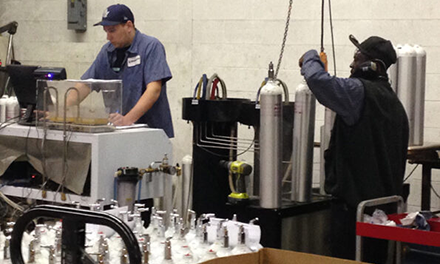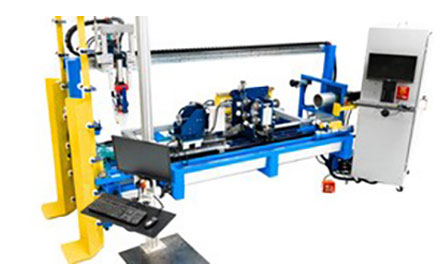
Hydrostatic Testing of Compressed Gas Cylinders
The hydrostatic test is the most common method for checking vessels. The pressure test is a way of detecting strength and leaks in containers like gas cylinders. It requires filling the cylinder with water and pressurizing it to the prescribed pressure value.
New cylinders produced would be qualified with a hydrostatic test. According to the country’s standards, they would be repainted at a certain distance. Testing cylinders is particularly necessary because if these containers fail under pressure, they tend to explode.
The test system is calibrated daily before the start of production. The cylinder must pass internal and external visual inspections before being tested hydrostatically. It is then tested in a water jacket where it is pressurized to its test pressure and held for 30 stable seconds, and the volumetric expansion (VE) is measured by an expansion indication device (EID)); measured in this case means the amount of liquid see being forced through the expansion line into EID because of volume increase in the pressurized cylinder that is sealed within a water jacket. The cylinder is then depressurized, and permanent expansion (PVE or permanent volume increase of cylinder due to deformation under pressure) is measured by how much over-the-final volume in EID has exceeded the unpressurized volume.
The information required to describe the test requirements is engraved on the shoulder of this cylinder, including regulatory authority, design standard/specification serial number, manufacturer, production date, and sometimes other relevant information. Failed cylinders will undergo a condemnation process, thus ensuring that they can never be used again. On the shoulder of those cylinders that passed hydrostatic testing, there is a stamp with the appropriate date and the registration mark of their test agency.
The required testing frequency is as follows:
- TC-3ALM/DOT-3AL gas cylinders are required to be tested to this standard every five years
- TC-3AAM/DOT-3AA cylinders must also be tested every five years. However, unless it was stamped with a star (*) next to its last inspection date conducted under certain specifications which determine that they are to be testable ten years later instead of five years later
- TC-3FCM, TC-3HWM, and TC-3CCM gas cylinders must be tested every 5 years and are limited to a 15-year life from date of manufacture
- ISO9809-1 gas cylinders need to undergo a periodical inspection every 10 years
- Hydrostatic tests are done at our site. We use the Galiso Rec4 Open to perform them.





